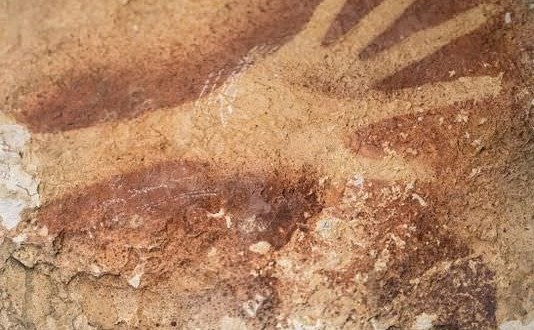A painting of a “pig-deer” in a cave in the Indonesian island of Sulawesi could be the oldest known figurative work of art in the world, according to scientific dating methods.
The discovery questions established notions of Europe as the birthplace of prehistoric art and suggests that cultural development occurred simultaneously across various parts of the world, reports Reuters.
Europe had been thought to have the world’s oldest rock art, with paintings dating back more than 30,000 years found at several sites.
The world’s oldest dated cave art is a red dot found in the El Castillo cave in Cantabria, northern Spain, which was painted 40,800 years ago, not long after modern man arrived in Europe.
The Indonesian cave art was first recorded in the 1950s but its age had not been known until now.
The two areas are around 8,000 miles apart and the Indonesian findings, published in the journal Nature, could cause a rethink about where art first originated.
Co-author Thomas Sutikna, a University of Wollongong (UOW) PhD student, said rock art was “one of the first indicators of an abstract mind – the onset of being human as we know it”.
He said: “Rock art might have emerged independently at about the same time in early modern human populations in Europe and Southeast Asia, or it might have been widely practised by the first modern humans to leave Africa tens of thousands of years earlier – if so, then animal art could have much deeper origins.”
The team found 12 hand stencils and two “figurative animal depictions” at seven limestone cave sites in the south west of Sulawesi.
Using a high-precision method, known as U-series dating, samples from 14 paintings at seven caves were shown to range in age from 39.9 to 17.4 thousand years ago.
However, the U-series dates only provide minimum ages for the art, which could be far older.
The archaeologists from UoW and Griffith University in Brisbane found that a hand stencil in a cave in Maros on Sulawesi was 39,900 years old, making it the oldest of its type in the world.
They also found a painting of a babirusa or pig-deer, which was at least 35,400 years old, making it, they say, among the earliest dated figurative depictions in the world, if not the earliest.
The paper’s co-author, Dr Anthony Dosseto, director of the Wollongong Isotope Geochronology Laboratory, added: “Europeans can’t exclusively claim to be the first to develop an abstract mind any more.
“They need to share this, at least, with the early inhabitants of Indonesia.”
Agencies/Canadajournal
 Canada Journal – News of the World Articles and videos to bring you the biggest Canadian news stories from across the country every day
Canada Journal – News of the World Articles and videos to bring you the biggest Canadian news stories from across the country every day



